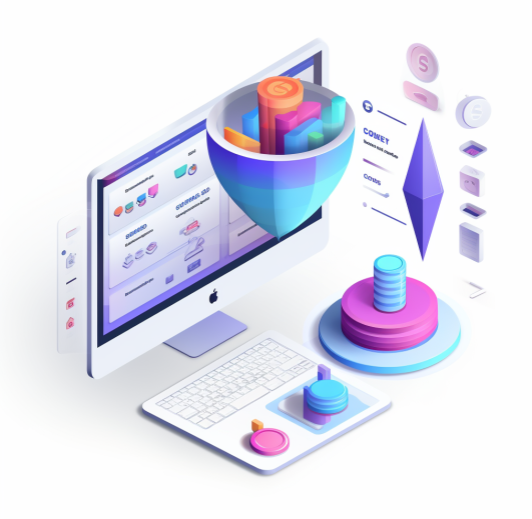Are you tired of putting in all the effort to drive traffic to your website, only to see visitors leave without taking any action? It’s time to level up your conversion game with this comprehensive guide to Conversion Rate Optimization (CRO). In this guide, we’ll walk you through the essential strategies, techniques, and best practices to help you convert your website visitors into loyal customers. Get ready to optimize your conversion rates like a pro!
Conversion Rate Optimization (CRO) is the systematic process of increasing the percentage of website visitors who take a desired action, such as making a purchase, filling out a form, or subscribing to a newsletter. It’s all about getting your visitors to do what you want them to do.
Why is CRO important, you ask? Well, imagine you have a fancy storefront with lots of foot traffic, but no one is buying your products. That’s exactly what’s happening if your website has high traffic but low conversions. CRO helps you maximize the value of your existing traffic and turn more visitors into customers.
Calculating your conversion rate is simple. Divide the number of conversions (desired actions) by the total number of visitors and multiply by 100 to get the percentage. For example, if you had 100 conversions and 1,000 visitors, your conversion rate would be 10%.
To optimize your conversion rate, you need to understand your target audience inside out. Start by creating detailed buyer personas that represent your ideal customers. Dig deep into their demographics, interests, pain points, and motivations. This will help you craft compelling messages that resonate with your audience.
Next, analyze user behavior on your website using tools like Google Analytics. Look for patterns and identify areas where visitors are dropping off or getting stuck. This data will give you insights into the friction points in your conversion funnel.
Don’t forget to collect customer feedback through surveys, live chats, or feedback forms. Ask your customers what they love about your website and what could be improved. This qualitative data will uncover valuable insights that can drive your optimization efforts.
A user-friendly website is crucial for high conversion rates. Start by enhancing the overall user experience (UX) by making your website visually appealing, easy to navigate, and mobile-friendly. A cluttered and confusing layout can drive visitors away, so keep it clean and intuitive.
Streamline your navigation to make it easy for visitors to find what they’re looking for. Use clear and descriptive labels for your menu items and organize your content logically. A well-structured website will guide visitors towards your desired actions.
Page load speed can make or break your conversions. People have short attention spans, and if your website takes forever to load, they’ll bounce right off. Optimize your images, use caching, and choose a reliable hosting provider to ensure fast loading times.
Words have the power to influence decisions. Craft persuasive headlines that grab attention and make visitors want to know more. Use compelling language and highlight the benefits of your products or services.
When it comes to product descriptions, focus on benefits rather than features. Help your customers visualize the value they’ll get from your offerings. Use storytelling techniques and include social proof to build trust and credibility.
Don’t forget to use clear and compelling call-to-actions (CTAs) throughout your website. Whether it’s “Buy Now,” “Sign Up Today,” or “Get a Free Trial,” make your CTAs stand out and guide visitors towards taking action.
A/B testing is a powerful technique to optimize your conversion rates. It involves testing two or more versions of a web page or element to see which one performs better. For example, you can test different headlines, button colors, or layouts to determine what resonates best with your audience.
Start by identifying the elements you want to test. It could be a headline, a hero image, a form layout, or even the color of your CTA button. Make sure you test only one element at a time to get accurate results.
Analyze the data from your tests and make iterative changes based on the insights gained. Small tweaks can have a big impact on your conversions, so never stop experimenting.
Social proof is a powerful psychological cue that can significantly impact your conversion rates. People tend to trust the opinions and actions of others. Leverage this by showcasing customer testimonials, ratings, and reviews on your website.
Displaying the number of social media followers you have can also build trust and credibility. If people see that others trust and follow your brand, they’ll be more likely to convert.
Security badges and trust seals demonstrate that your site is safe and secure to use. These visual cues can alleviate any concerns visitors may have about sharing their personal information and increase their confidence in doing business with you.
The conversion funnel represents the journey your visitors take from the initial point of entry to the final desired action. Understanding each stage of the funnel is crucial for optimization.
Identify the bottlenecks in your conversion funnel by analyzing your data. Are visitors dropping off at the form submission stage? Is the checkout process too complicated? Pinpoint the friction points and optimize each stage to remove barriers and smooth out the user experience.
Remember, optimization is an ongoing process. Continuously track your conversion rates and make data-driven improvements to ensure a steady increase in your conversion rates.
Conclusion:
By implementing the strategies and techniques outlined in this conversion rate optimization guide, you’ll be well on your way to boosting your conversion rates and maximizing the return on your marketing efforts. Remember to test, analyze, and iterate to find what works best for your audience. Happy optimizing!










Leave a Reply